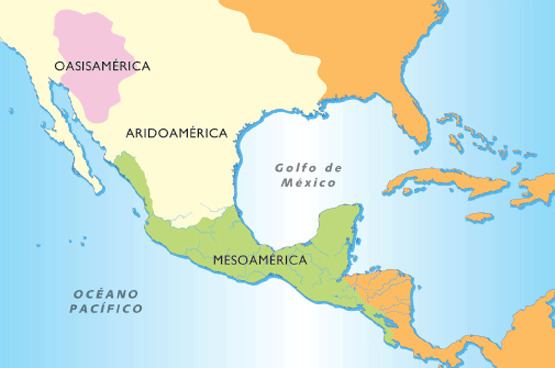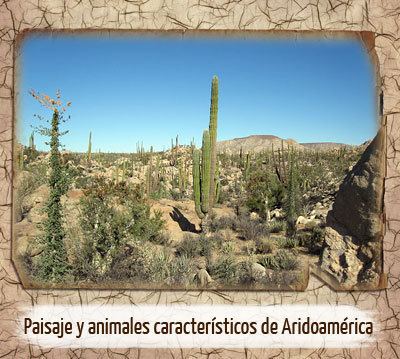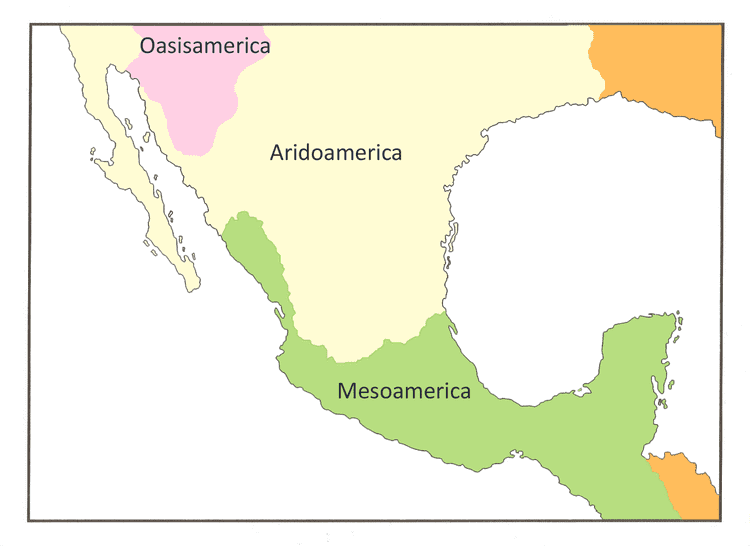 | ||
Mesoamerica oasisamerica y aridoamerica
Aridoamerica is term coined in 1988 to denote a cultural region spanning the northern and central regions of Mexico and small parts of the Southwest United States. Mesoamerica lies to the south and east, and Oasisamerica to the north. These cultural regions overlap each other.
Contents

Unlike Mesoamerica, Aridoamerica has a dry, arid climate and geography. Because of the hard conditions, the precolumbian people in this region had cultures and subsistence patterns distinct from their Mesoamerican neighbors. The region has only 120 cm (47 in) to 160 cm (63 in) of annual precipitation. The sparse rainfall feeds seasonal creeks and waterholes.

Aridoamerica
Subsistence

The Chichimeca, an umbrella term for several tribes used by the Nahua people, were hunter-gatherers in Aridoamerica grasslands. They gathered magueys, yucca flowers, mesquite beans, chia seeds, and cacti, including the paddles of fruits of nopal cactus. The century plant (Agave americana) is a particularly important resource in the region.

Despite dry conditions, Aridoamerica boasts the greatest diversity of wild and domesticated tepary beans (Phaseolus acutifolius) and is a possible site of their domestication. Maize cultivation reached Aridoamerica by about 2100 BCE. Archaeologists disagree whether the plant was introduced by Uto-Aztecan migrants from Mesoamerica or spread either northward or southward from other groups by cultural borrowing.

In Baja California, fishing and hunting provided food, as did harvesting acorns, nopal, pine nuts, and other native plants.
Historically, people of Aridoamerica coppiced willows, that is, tree trunks were cut to a stump to encourage the growth of slender shoots. These willow shoots were woven tightly to produce waterproof, cooking baskets. Fired-heated rocks were plunged into a gruel in the baskets to cook.
Geography
The current Mexican states that lie in Aridoamerica are:
The northern parts of:
